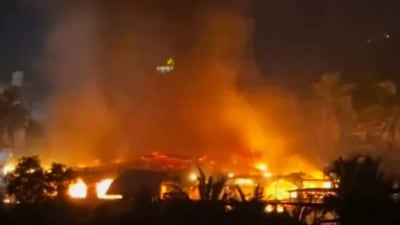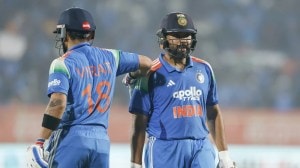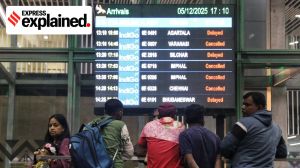All Things Nuclear
Eliminating Nuclear Threats Gareth Evans & Yoriko Kawaguchi Report of the International Commission on Nuclear Non-proliferation and Disarmament Pages: 294 Price: Not listed
Since the dawn of the atomic age 65 years ago,there have been occasional moments when chattering classes and policymakers caught the nuclear bug and endured intense debates on how to get rid of the most awful weapons man has ever invented. Thanks to US President Barack Obamas embrace of atomic abolition as Americas national security objective in a speech in Prague exactly a year ago this week and his high-profile nuclear diplomacy this month,we are right in the middle of a nuclear fever.
The report under review is an effort to educate policymakers around the world on the complex issues in controlling the spread of nuclear weapons and eliminating them,hopefully in the not too distant future.
Even well-informed citizens and decision-makers in governments find the nuclear debate daunting. They glaze over the unending string of abbreviations: GICNT,INMPC and GTRI are some you might hear next week as an international conference on nuclear security begins in Washington. The gap between the urgency of the issue and the difficulty of grasping it is nowhere bigger than in the nuclear arena.
As former foreign ministers of Australia and Japan two countries that have taken a sustained interest in nuclear issues Gareth Evans and Yoriko Kawaguchi are well placed to lead the intellectual exercise in defining the nuclear threat,delineating the necessary response and delivering an actionable agenda. Among the many top nuclear policymakers participating in the International Commission on Nuclear Non-proliferation and Disarmament was our own Brajesh Mishra,Indias first national security adviser and the man behind the 1998 Pokhran tests.
Evans and Kawaguchi have produced arguably the best possible introduction to the subject. From the comprehensive test ban treaty to the protection of nuclear material from terrorist groups,they walk us through a new global nuclear architecture that we must conceive and build. The simplicity of their style has not meant sacrificing the complex insight into the nuances of the current global nuclear discourse.
The volume should also serve as a much-needed antidote to the current scepticism in Delhi about nuclear disarmament. This week has already shown that there might be developments on the nuclear front that are likely to surprise Delhis nuclear cynics.
On Tuesday,Obama unveiled a new nuclear doctrine for the United States limiting the use of these dangerous weapons. On Thursday,Obama signed a new strategic arms reduction agreement with the Russian President Dmitry Medvedev in Prague. Early next week,Obama is hosting more than 40 world leaders,including the Indian prime minister,at the nuclear security summit in Washington.
Obamas nuclear activism demonstrates that when the president of the worlds most powerful nation decides to invest a bit of political capital on any theme,a lot of things can and will happen.
Many in Delhi would,however,hope that the current disarmament seizure,like many before it,shall pass sooner than later. The past might certainly be a guide to the future here.
The first was in the late 1950s and the early 1960s,when angry public reaction to the Russian and American testing of massive hydrogen bombs was led by nuclear peaceniks around the world. This in turn compelled the great powers to negotiate the worlds first nuclear arms control agreement,the Partial Test Ban Treaty,in 1963. But as Russia and America started talking to each other,the popular pressure for disarmament eased off.
The second was in the late 1970s and the early 1980s,when the renewed Soviet-American confrontation and the deployment of a new generation of nuclear weapons triggered massive peace protests in Europe and beyond. The street protests did compel Washington and Moscow to embark on significant nuclear arms reduction in the late 1980s. But the collapse of the Soviet Union took away,once again,the urgency for nuclear disarmament.
The growing fears of nuclear proliferation in recent years and the prospect that terrorists might acquire them and drop them on a major city have renewed the popular and intellectual support for nuclear disarmament.
Delhis cynics might be right in speculating that the present wave of arms control might pass. But they are wrong in ignoring the possibility that the latest fever might leave the nuclear body-politic in a different state.
In the previous two waves of nuclear arms control,India was marginal to the global debates. This time around,Delhi,as a nuclear weapon power,will not remain unaffected by what other powers might do on atomic matters. That alone is a good reason for all those interested in Indias nuclear future to take a careful look at what Evans and Kawaguchi have to say.
- 01
- 02
- 03
- 04
- 05































